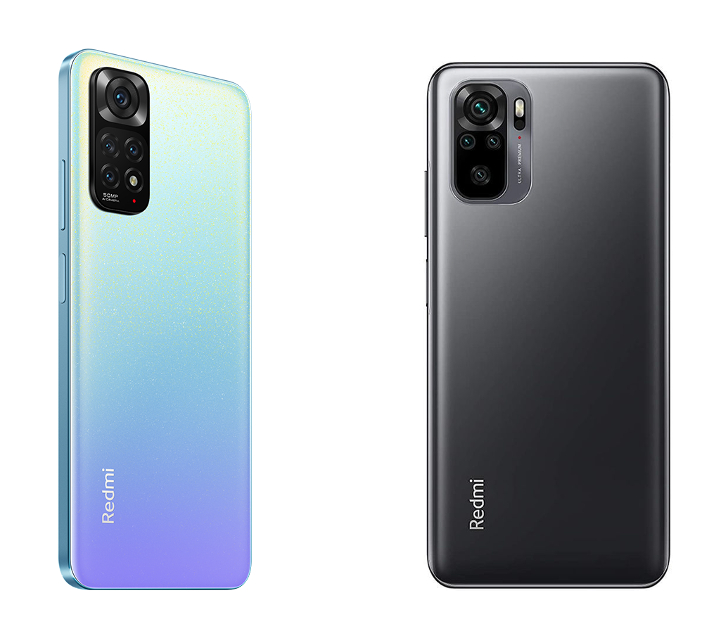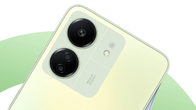
The Redmi Note 11 launched in India today as the successor to the Redmi Note 10 (review) smartphone that debuted in March 2021. The new smartphone comes with features like a 90Hz AMOLED display, 50MP quad rear cameras, Snapdragon 680 SoC, and a 5,000mAh battery with 33W fast-charging tech. There’s still no 5G support though. Let’s take a look at what are the upgrades it brings over the Redmi Note 10. So, without further ado, let’s compare the Redmi Note 10 and Redmi Note 11 prices in India, design, specifications, and features.
Redmi Note 11 vs Redmi Note 10: price in India
The Redmi Note 11 has launched in India with a starting price of Rs 13,499, whereas the Redmi Note 10 is presently available for Rs 13,999 for the base variant with 4GB RAM and 64GB storage. The Redmi Note 10 received a price hike multiple times, and currently, the device retails at 13,999 for the base variant. Here is the current price of the Redmi Note 10 and the launch price of the Redmi Note 11.
| Model | Variant | Price |
| Redmi Note 11 | 4GB + 64GB | Rs 13,499 |
| 4GB + 128GB | Rs 14,499 | |
| 6GB + 128GB | Rs 15,499 | |
| Redmi Note 10 | 4GB + 64GB | Rs 13,999 |
| 6GB + 128GB | Rs 15,499 |
Redmi Note 11 vs Redmi Note 10: design, specifications, and features
Design

The design of the Redmi Note 11 is identical to that of its predecessor, the Redmi Note 10, with some tweaks here and there. Both have a similar 6.43-inch FHD+ display on the front, with a centre-aligned punch-hole camera cutout. Speaking of the camera, the two smartphones have a rectangular camera island at the rear — the camera bump on the Redmi Note 11 is more prominent when compared to Redmi Note 10.
Redmi Note 11 has a speaker grill, 3.5mm headphone jack, and a microphone on top. It features a USB Type-C port, an IR blaster, and a secondary speaker at the bottom. The device houses volume rockers and a power button that doubles up as a fingerprint scanner on the right side and a SIM tray on the left side. The Redmi Note 11 has flat sides and rounded edges.
The Redmi Note 10 has a microphone and speaker grill on top. The device also features a USB Type-C port, a 3.5mm headphone jack, secondary speakers, and a microphone at the bottom. It has a power button that also works as a fingerprint scanner paired with volume rockers on the right side and a SIM card slot on the left side. Redmi Note 10 has curved sides and rounded edges.
Processor, storage, and RAM
The Redmi Note 10 packs the Qualcomm Snapdragon 678 chipset, while the Redmi Note 11 features the Qualcomm Snapdragon 680 processor. Neither chipset supports 5G connectivity.
In Geekbench 5, the Qualcomm Snapdragon 680 on the Redmi Note 11 scores 383 points in the single-core test and 1511 points in the multi-core test. The Qualcomm Snapdragon 678 on the Redmi Note 10 secures 531 points in the single-core test and 1591 points in the multi-core test. The Redmi Note 11 performs poorly when compared to its predecessor, but one should not go by benchmarks purely. The Redmi Note 11’s real-world test could prove differently, but only time will tell.
As for RAM and storage, the Redmi Note 11 offers up to 6GB RAM and 128GB internal storage, which is the same as the Redmi Note 10. Both smartphones have a dedicated microSD card slot to expand the storage. That said, the Redmi Note 11 supports RAM Booster that can extend the RAM by up to 8GB more.
Display

Redmi Note 10 front panel
Redmi Note 11 comes with a 6.43-inch Full HD+ AMOLED display with a 90Hz refresh rate, whereas the Redmi Note 10 offers a 6.43-inch Super AMOLED screen with a slower 60Hz refresh rate. Both flaunt a centre-positioned punch-hole cutout, Corning Gorilla Glass 3 protection, 1080 x 2400 pixels resolution, 409ppi pixel density, and slim bezels. The Redmi Note 11 supports 700nits brightness (1000nits peak brightness) compared to the 450nits brightness of Redmi Note 10 (with 1,100 nits peak brightness).
Cameras

Redmi Note 11 vs Note 10 camera islands
Both Redmi Note 11 and Redmi Note 10 have a quad-camera setup on the back. Redmi Note 11 comes with a 50MP f/1.8 primary camera, an 8MP f/2.2 ultra-wide lens, a 2MP f/2.4 depth sensor, and a 2MP f/2.4 macro camera. On the other hand, the Redmi Note 10 comes with a 48MP f/1.8 primary camera, an 8MP f/2.2 ultra-wide lens, a 2MP f/2.4 depth sensor, and a 2MP f/2.4 macro camera.
On the front, both feature a 13MP selfie shooter. Things get interesting with the video capture quality though, as the Redmi Note 10 supports 4K videos at 30fps, whereas its successor is limited to just 1080p video at 30fps.
Battery
Both smartphones pack a 5,000mAh battery with 33W fast charging. The Redmi Note 10 is advertised to fully charge the battery in 74 minutes, whereas the Redmi Note 11 is claimed to charge from 0 to 100 percent in 60 mins, thanks to the Quick Charge 3+ technology. The Redmi Note 10 can easily last a full day with moderate usage on a single charge. We are yet to experience the battery life on the Redmi Note 11, but as the battery is the same 5,000mAh, we can expect a similar battery life with the Redmi Note 11.
Connectivity
Both Redmi Note 11 and Redmi Note 10 are quite similar on the connectivity front and feature dual-band Wi-Fi, dual-SIM, Bluetooth 5.0, 4G LTE, GPS, 3.5mm jack, IR blaster, and USB Type-C port.
Redmi Note 11 vs Redmi Note 10: verdict
The Redmi Note 11 offers several moderate upgrades over its predecessor, with the 90Hz refresh rate, a newer processor, and more storage being the highlights. However, many other features are quite comparable to those of the predecessors, so those already using the Redmi Note 10 may not feel much of a difference. Nonetheless, it would be a decent budget smartphone if you are upgrading from a Redmi Note 9 or older series and don’t bother about 5G connectivity too much.















